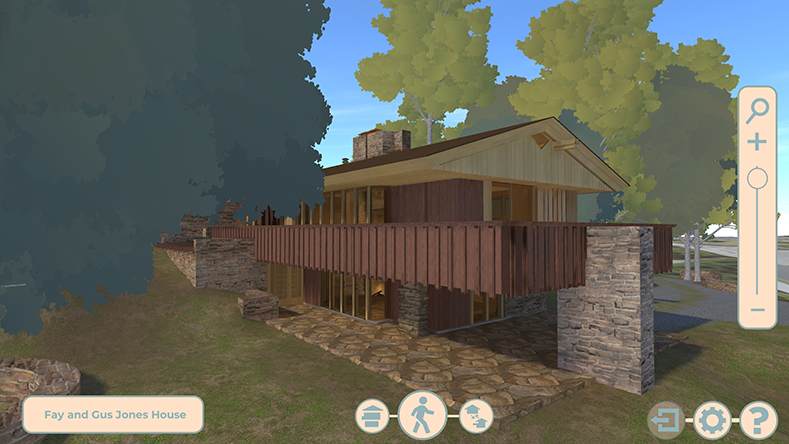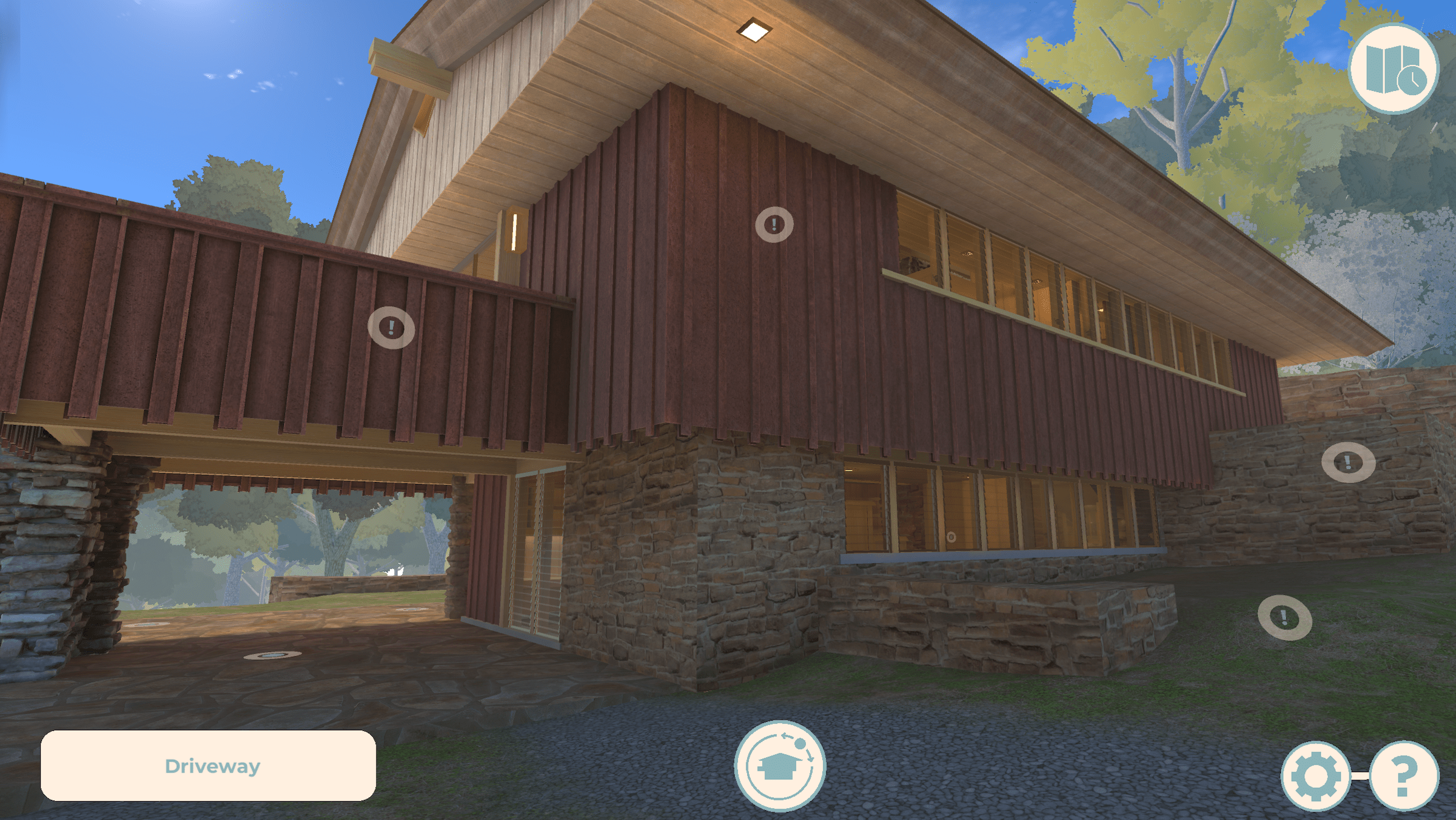A House of the Ozarks: Fay Jones and the American House
Bringing the private houses of award-winning Ozark architect Fay Jones to a public audience.
Awarded the Chancellor’s Discover, Creativity, Innovation and Collaboration Fund for 2017-2018.
Virtually tour the home of Fay Jones, and learn about his architectural philosophy
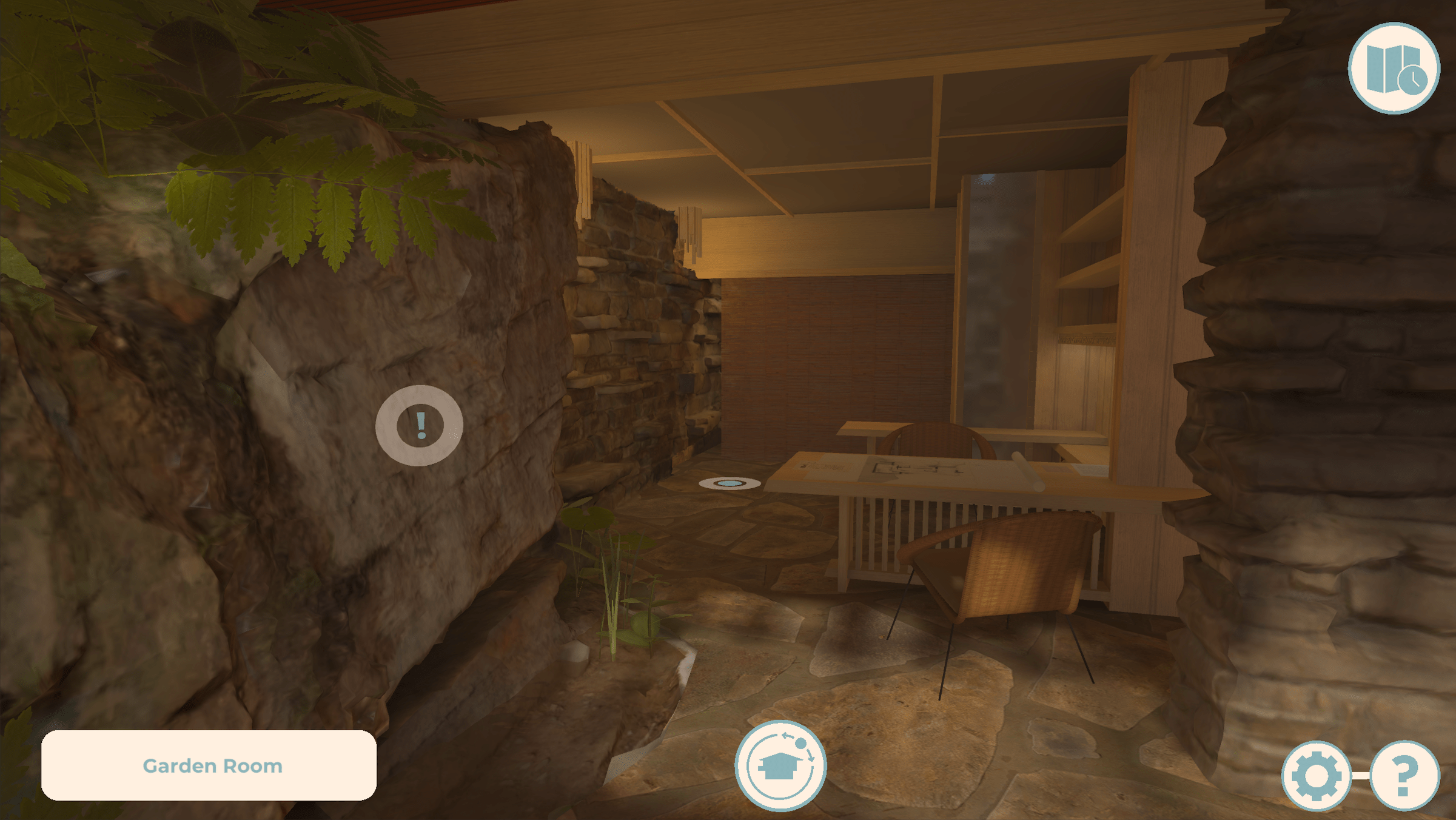
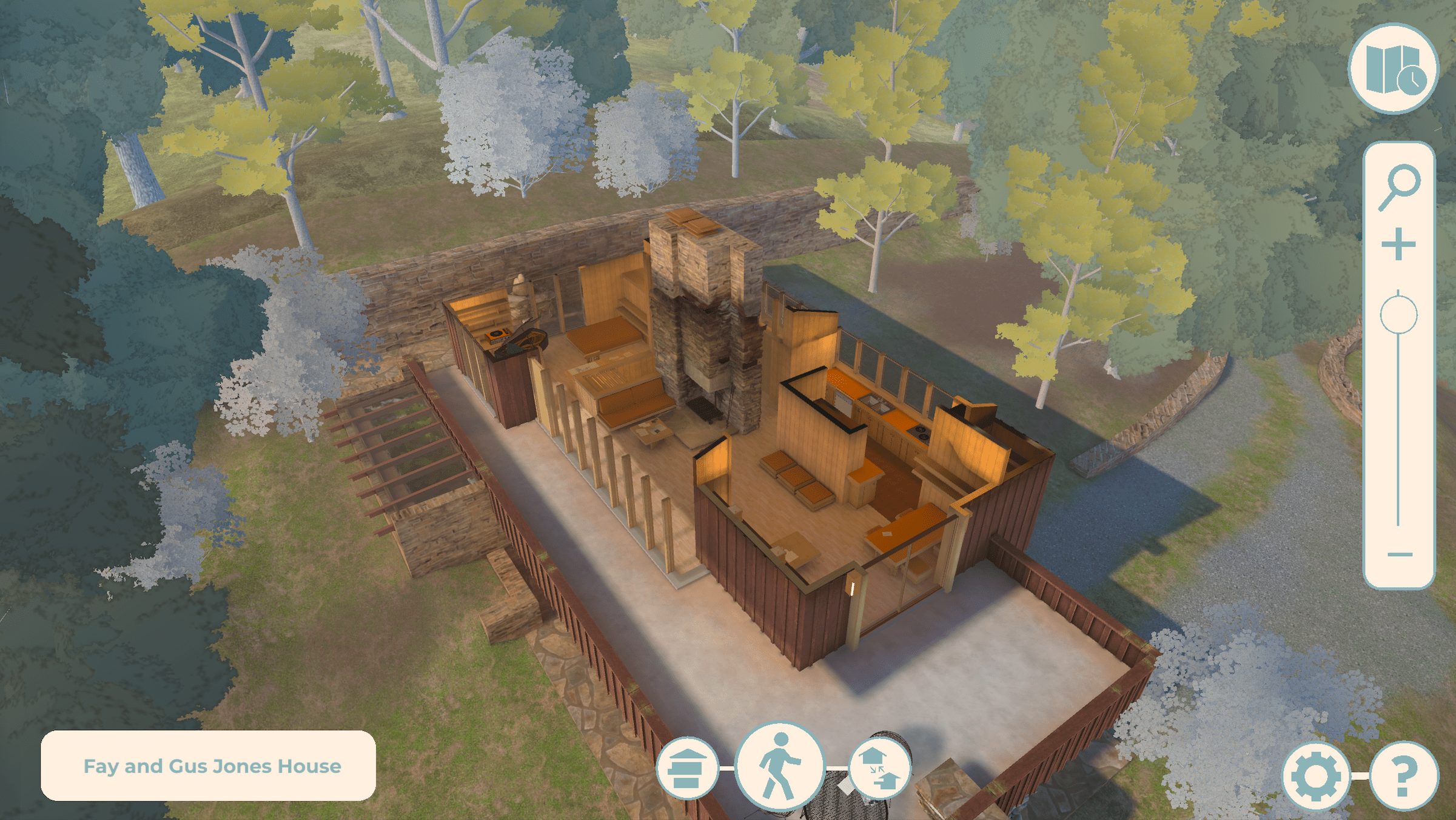
Virtually tour Fay Jones’ family home. Designed by Fay himself, it has been called the test-bed for many of Fay’s architectural ideas. he application provides a multi-modal explorational experience, allowing the user to deconstruct the house from a birds-eye view, and examine historical materials and educational excerpts in a first-person walkthrough. Complete with photogrameterized features, original furniture, and accurate landscape and lighting, A House of the Ozarks enables the user to engage with Jones’ philosophy about the connectedness of the inhabitant, the architecture, and the landscape.
Learn how US Mid-Century Modern architects impacted their discipline, and each other
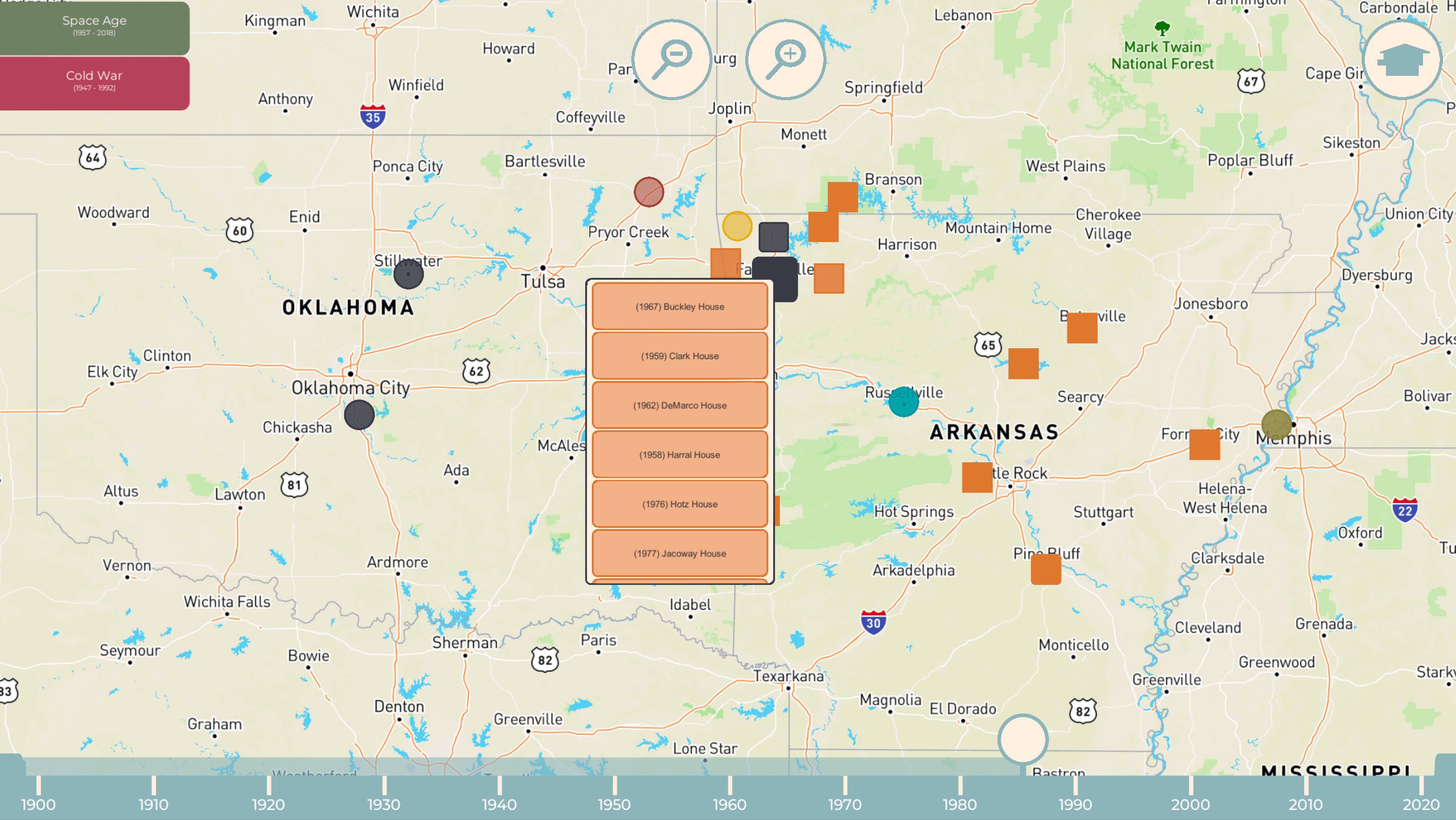
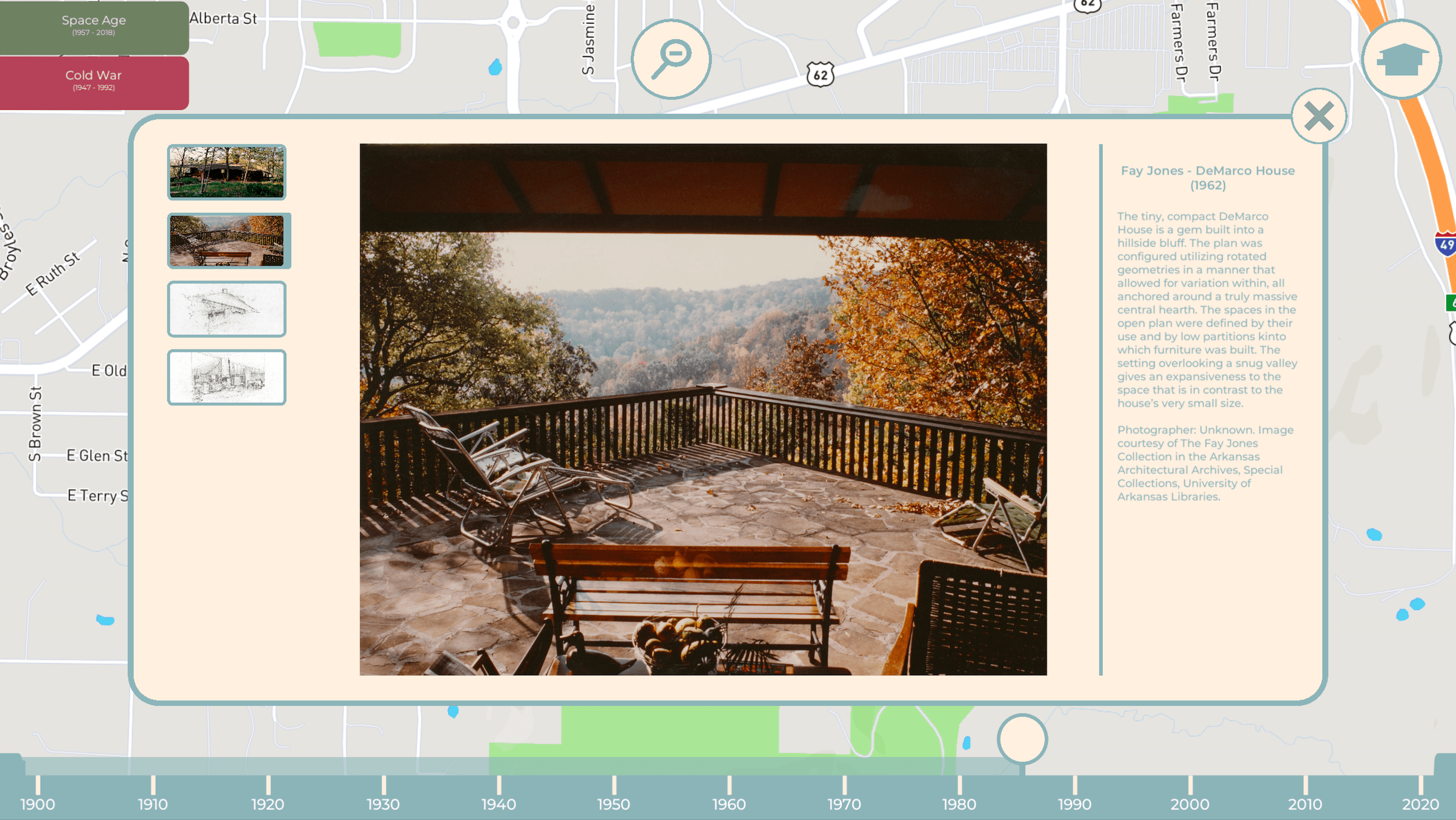
The “Time Map” feature tells the story of US Mid-Century Modern architects and their lasting impact on architecture, from Frank Lloyd Wright and the Prairie School to the Tiny House movement of today. Users can trace the development of the Mid-Century Modern movement in the US, viewing a map of where Jones and his contemporaries lived, studied, and worked over time (1900-2019), contextualized by relevant socio-political occurrences.
Taking the experience to the public
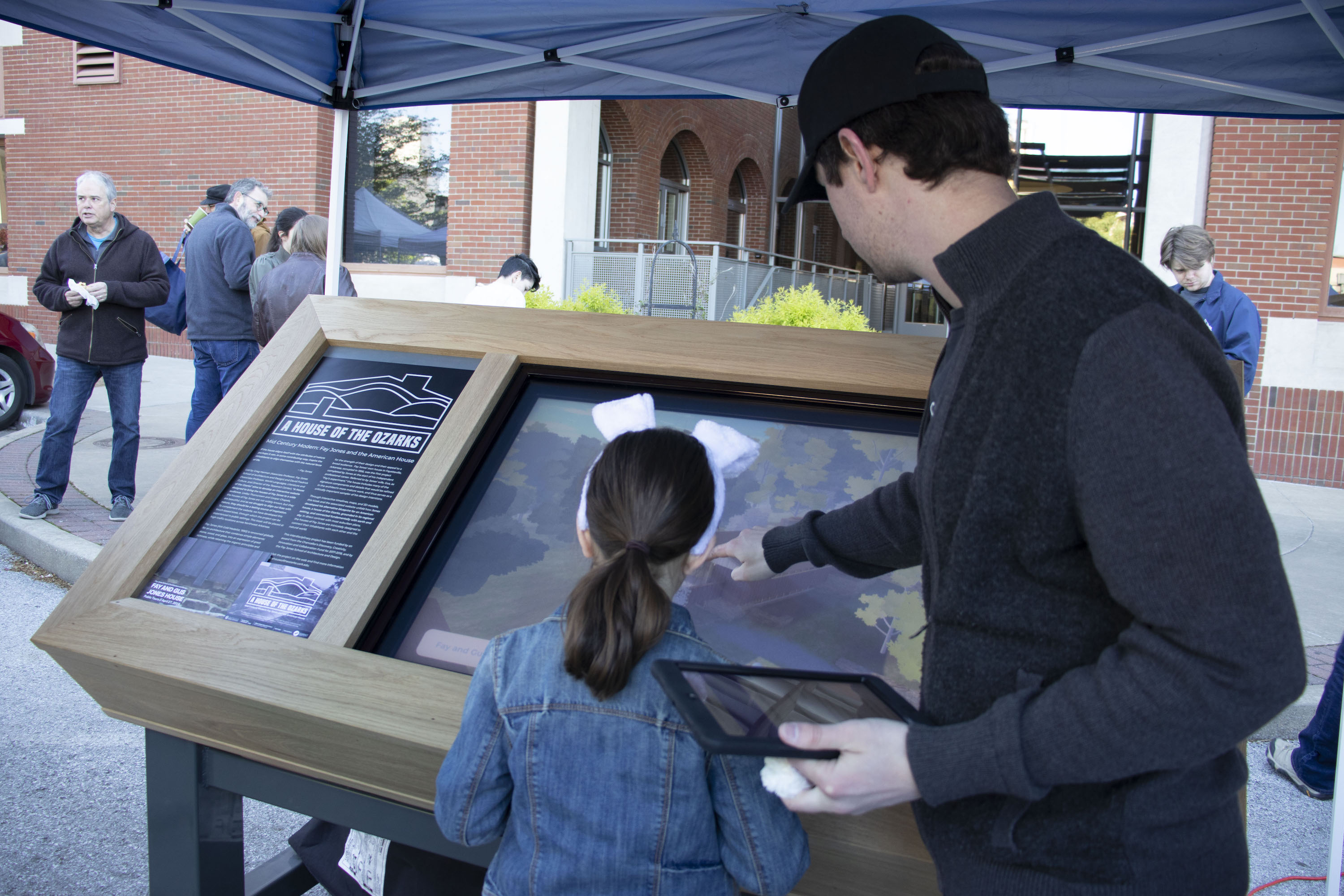
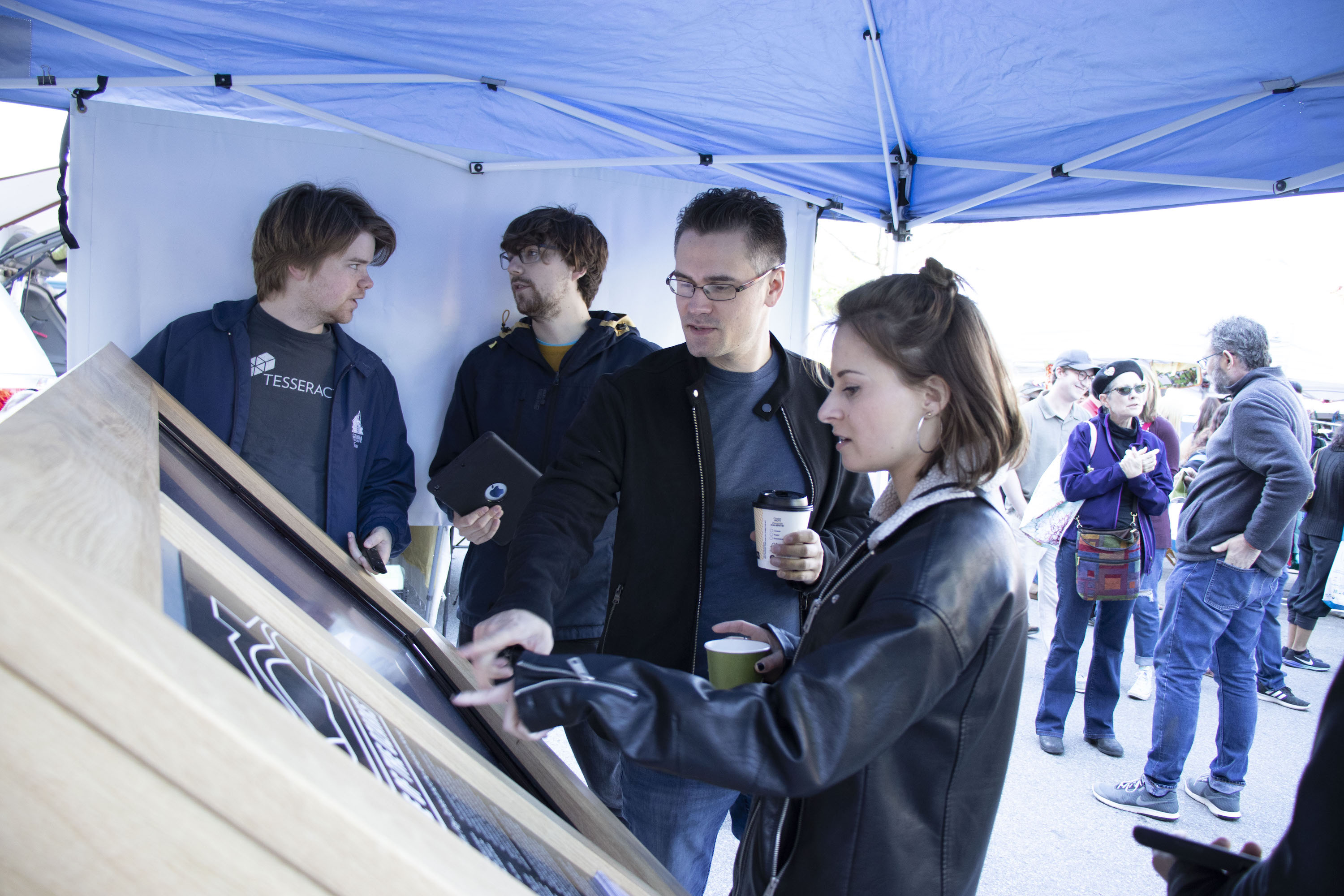
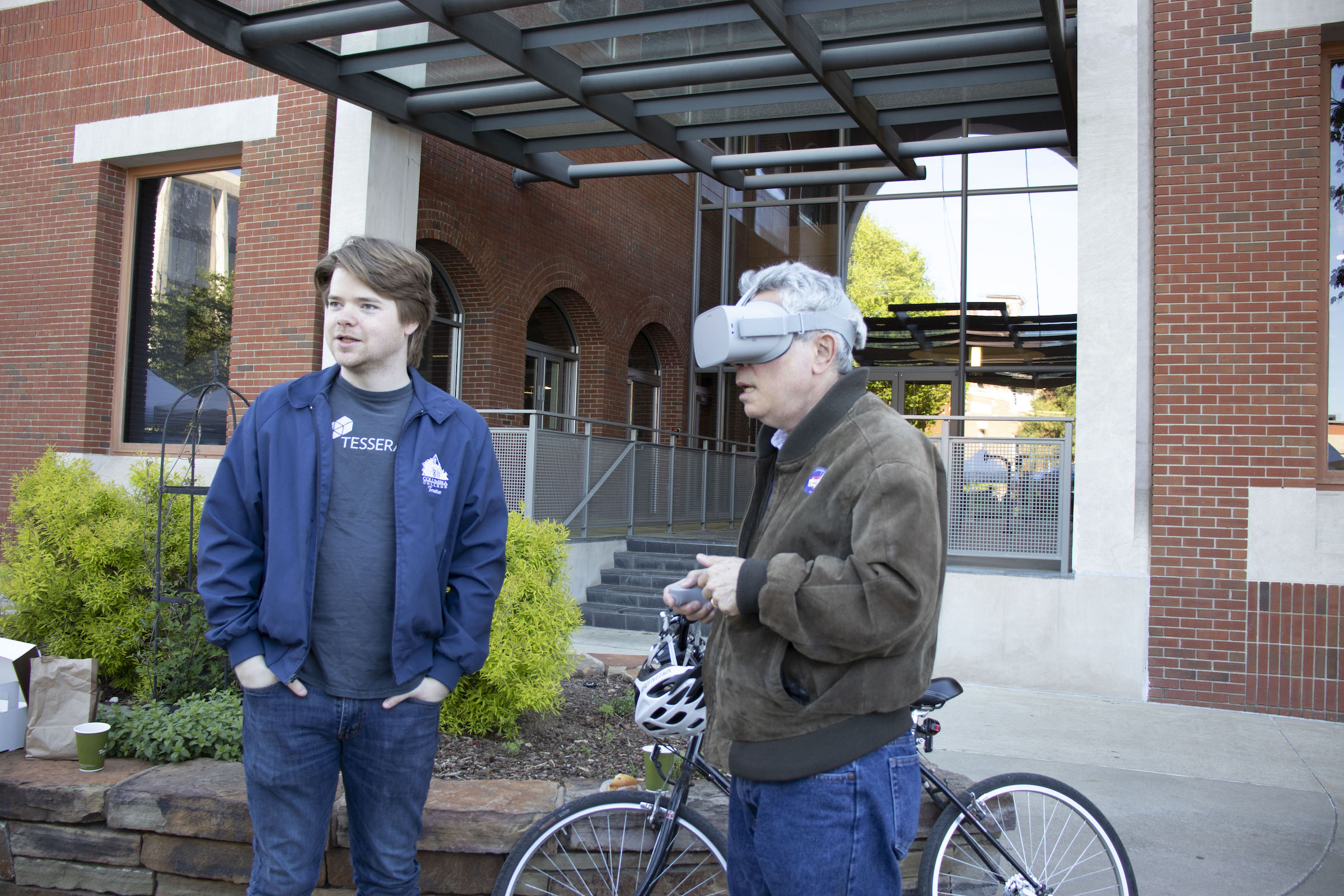
To pursue our goals of promoting knowledge of local architect Fay Jones and bringing his private architecture to the public, we designed and built a touch-screen kiosk for the application. This kiosk has been featured at various locations including the Fay Jones School of Architecture + Design, the Fayetteville Square, and the Fayetteville Public Library.
Looking ahead: housing the human and the sacred
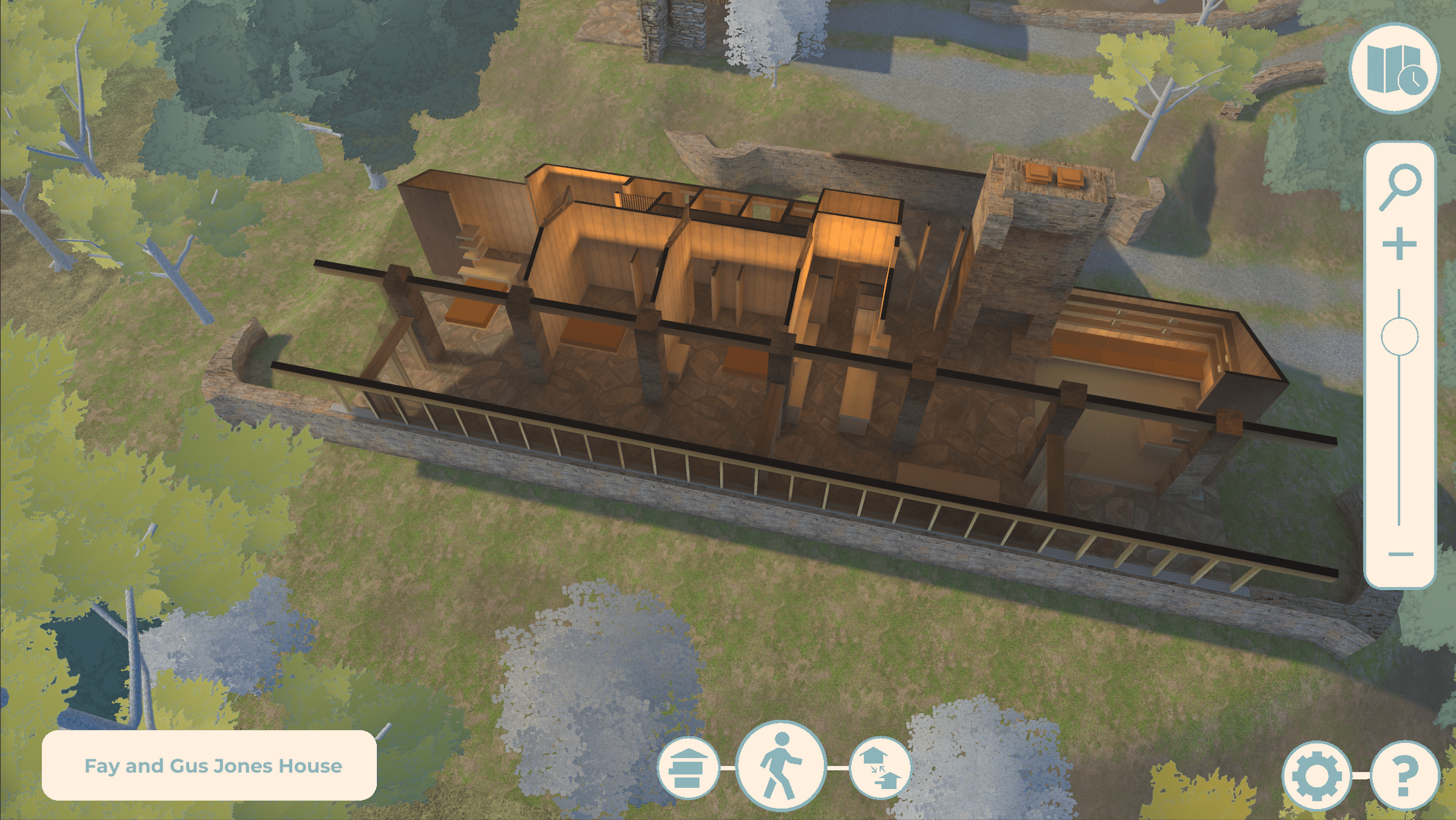
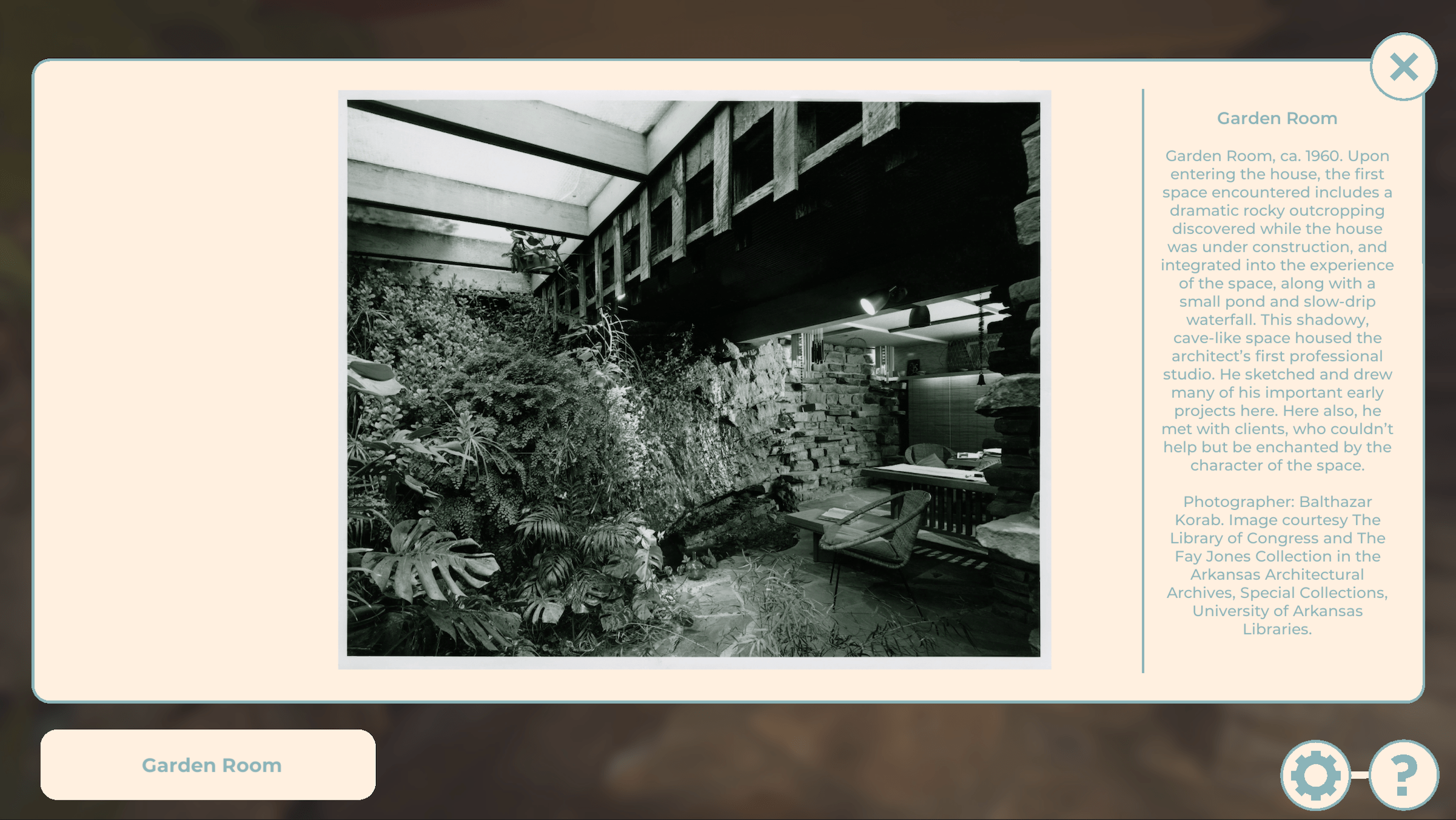
Looking ahead, we want to explicitly explore the evolving ways in which Jones considers the human inhabitants and the sacred across the breadth of his houses and chapels. Further funding will allow us to bring more of Jones’ work into the public eye, and expose more people to the fantastic spaces of this singular Ozark architect.


